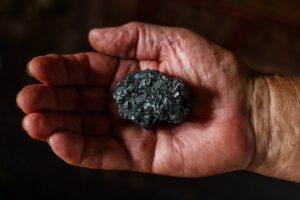Whether you manufacture parts for automobiles, make electronic components for computers, or supply parts to non-automotive manufacturers, you will likely need to report on conflict minerals. But what are conflict minerals and how do you provide data on them to your customers? These conflict minerals FAQs will help you get started if you are new the world of conflict minerals reporting.
1. What Are Conflict Minerals?
Conflict minerals are minerals that are mined from areas considered conflict regions. The mining of these minerals has been known to fund violent conflicts and support human trafficking violations in some areas of the world, especially in the Democratic Republic of the Congo (DRC) and adjoining countries.
2. What Does 3TG Stand For?
Tin, tantalum, tungsten, and gold (3TG) are the most common conflict minerals. Therefore, most conflict minerals rules and regulations focus on the supply chains of these minerals.
3. Are There More Conflict Minerals Beyond 3TG?
As both government entities and consumers around the world become more focused on the responsible sourcing of minerals, there is interest in requiring reporting for additional minerals beyond the traditional 3TG.
Currently cobalt, which is used in electric vehicle batteries and other products, is receiving a lot of attention. While cobalt reporting is not required by US legislation, some companies may require their suppliers to report on cobalt to show due diligence in minimizing the use of conflict minerals.
Mica is another growing concern, and companies may also require reporting on this mineral.
4. What Products Contain Conflict Minerals?
Conflict minerals may be found in many products consumers use every day, including cars, computers, and cell phones. 3TG minerals are used to build the circuit boards, capacitors, and other electronic components of these items used by millions of people worldwide.
5. What Conflict Minerals Regulations Exist in the United States?
In the United States, the Dodd-Frank Act applies to conflict minerals. It requires companies to disclose the use and sources of 3TG in products. The Dodd-Frank Act does not make the sourcing of these minerals from conflict regions illegal, but rather aims to increase transparency about minerals sourcing which would then lead to less minerals being mined from sources that contribute to violence and human rights violations.
The Dodd-Frank Act applies to all publicly traded companies in the United States. These companies must submit a yearly report to the Securities and Exchange Commission (SEC).
6. What Conflict Minerals Regulations Exist in the European Union?
In 2021, the EU Conflict Minerals Regulation went into effect. This legislation applies to the same 3TG conflict minerals as the Dodd-Frank Act, and requires companies to meet due diligence standards when sourcing minerals. To comply with the EU Conflict Minerals Regulation, companies that import 3TG into the EU must report on supply chain due diligence each year.
7. What Does Due Diligence Mean?
Due Diligence means that you are documenting that you are taking reasonable and thorough steps to responsibly source minerals. For downstream companies (i.e. component and product manufacturers), this means establishing a conflict minerals policy and program, consistently engaging with suppliers to collect data, and reporting that data to your customers and/or government agencies.
8. What Are the Penalties for Failing to Comply?
In the United States, the SEC does not currently impose fines on companies using conflict minerals. However, non-compliance could put your company at risk as it is illegal to knowingly provide false or misleading statements to the SEC.
The EU will be reviewing potential penalties for non-compliant companies in January 2023.
Failing to comply can also risk your relationship with your customers, who expect transparency in conflict minerals reporting.
You may also loose public support, as human rights activists, non-governmental organizations, and consumers may expect your products to be conflict free.
9. Is it Illegal to Obtain Minerals from Conflict Zones?
No, it is not illegal to obtain minerals from conflict zones. In fact, sourcing minerals from smelters and miners not involved in conflict in the DRC and other countries can help support local economies. The goal of conflict minerals legislation is not to prevent sourcing minerals from these areas of the world, but rather to provide full transparency to facilitate responsible sourcing.
10. How Can I Report Conflict Minerals?
The most common way to report conflict minerals to your customers is to use the Extended Minerals Reporting Template (EMRT). Up until recently, the Conflict Minerals Reporting Template was the go-to tool for reporting, but the new EMRT can assist you in reporting minerals beyond 3TG in addition to the 3TG minerals. This is a free, standardized reporting template that allows you to transfer information through the supply chain.
There are also software solutions that can help you with your reporting, including the Compliance Data Exchange (CDX) and the iPoint Conflict Minerals Platform.
11. Where Can I Get Help Reporting My Conflict Minerals?
If you need support in your conflict minerals reporting, contact Tetra Tech’s conflict minerals experts at [email protected]. We can help you identify conflict minerals in your supply chain, provide conflict minerals compliance training, and assist you with your due diligence activities.
Requirements for conflict minerals reporting continue to expand as new minerals in conflict regions are identified and public support for conflict-free products grows. Failure to report can put your relationships with your customers at risk. Find success in conflict minerals reporting by contacting Tetra Tech today.






